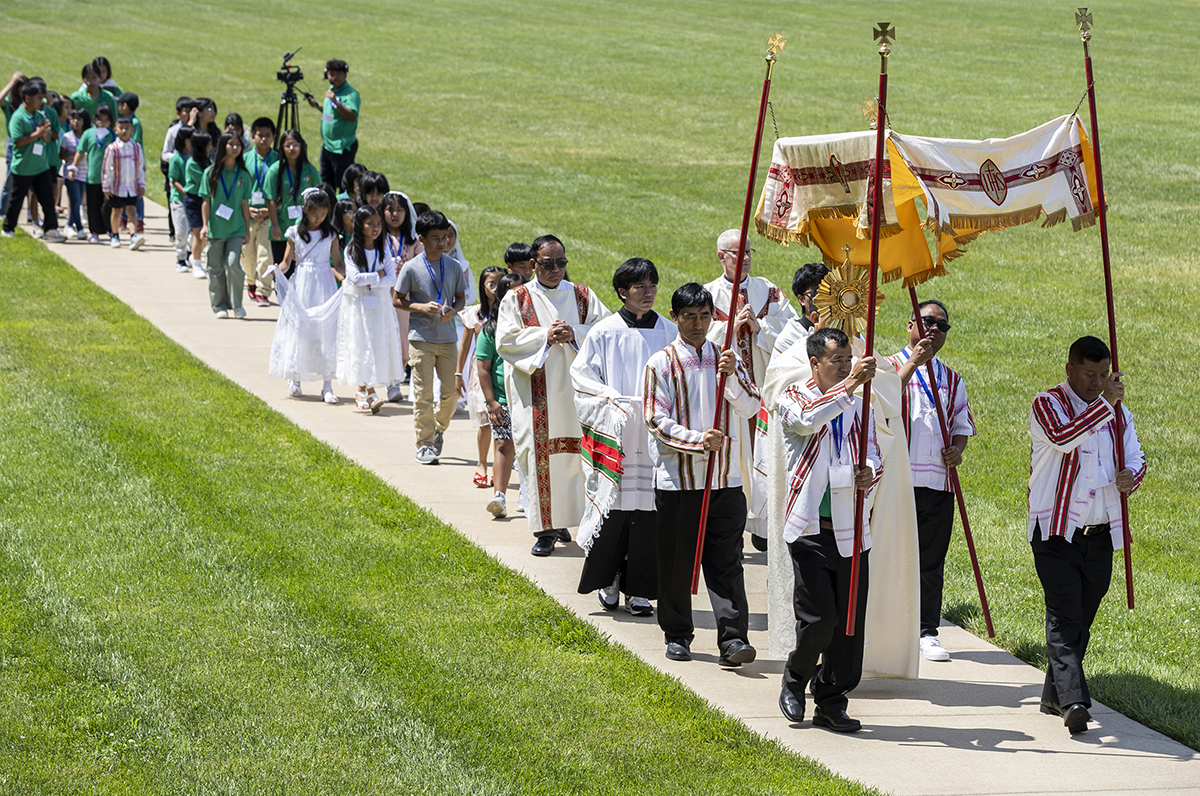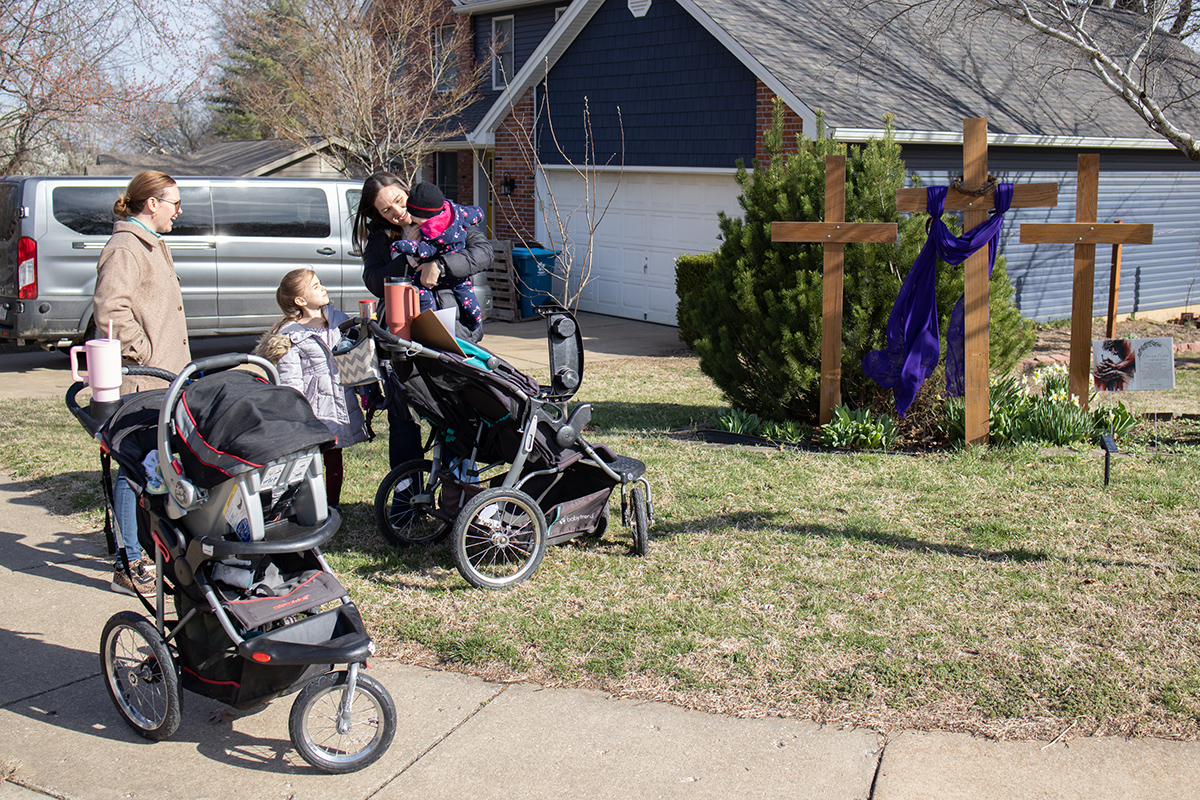HOPE IN THE RESURRECTION: Church teaching on cremation and burial highlights dignity of humans

A new method of cremation called alkaline hydrolysis draws attention to Church’s teaching on the practice of cremation
When St. Louis Cardinals legend Albert “Red” Schoendienst passed away this summer, his wish was to have a funeral Mass. He also wanted to be cremated. So after the funeral Mass at the Cathedral Basilica of Saint Louis in June, his family carried out the second wish, which was followed by a private burial in a cemetery.
Colleen Schoendienst noted that her father, who was a devoted Catholic, would have wanted it just that way — all done within the guidelines of the Church. “We had Dad’s body at the Cathedral, and we wanted to place the (funeral) pall on his casket,” she said, which serves as a reminder of the deceased person’s baptismal garment, and the joyful triumph over death in Jesus’ resurrection.
Having a funeral, followed by the cremation and burial, “we think it gave the family closure,” Colleen Schoendienst added. “It was a beautiful ceremony, and we were happy we did it this way.”
The Church has allowed cremation since 1963, when Pope Paul VI permitted it in cases of necessity. Cremation has become increasingly common in the United States, rising from 3.56 percent in 1960 to 48.6 percent in 2015, according to the Cremation Association of North America. The National Funeral Directors Association estimates 71.3 percent of all deceased bodies will be cremated by 2030. Many families choosing cremation say that it is more cost efficient, with the cost roughly half of traditional burial, according to the association.
A newer method of cremation called alkaline hydrolysis, in which the majority of the body is broken down to a liquid form and disposed of typically in the sewer, has raised concerns by Church leaders. Church teaching about the dignity of the human body and how we are to show reverence for human remains calls into question the method of disposal in alkaline hydrolysis.
The Catechism of the Catholic Church teaches that “The bodies of the dead must be treated with respect and charity, in faith and hope of the Resurrection. The burial of the dead is a corporal work of mercy, it honors the children of God who are temples of the Holy Spirit” Furthermore, “the Church permits cremation, provided that it does not demonstrate a denial of faith in the resurrection of the body” (CCC 2300-01).
“The bodies of the dead must be treated with respect and charity, in faith and hope of the Resurrection.”
In 2016, the Congregation for the Doctrine of the Faith released “Ad resurgendum cum Christo,” an instruction that reminds Catholics that they are obligated to bury cremated remains in cemeteries or other sacred places.
This week’s Dear Father column from Father John Mayo notes that this is necessary “so that the cremains aren’t forgotten or disrespected, even accidentally, in any way. It also allows for more of the faithful, such as friends and parishioners, to visit (the cemetery) and pray for them as well.”
Practically speaking, that means an urn containing cremated remains shouldn’t be kept in the home. Other practices, including spreading cremains at sea or incorporating them into keepsakes, such as a locket, are not permitted.
So what does the Church teach about the dignity of the human body? At a funeral, the “presence of the body most clearly brings to mind the life and death of the person and better expresses the values that the Church affirms in its rites,” according to a document by the Federation of Diocesan Liturgical Commissions. Therefore, the Church strongly prefers that cremation takes place after the funeral liturgy.
The Order of Christian Funerals notes that the Church “clearly prefers and urges that the full body be present for the funeral rites” (OCF, 414). The Catholic funeral rites are sacred acts that help bereaved families on their journey over several days through mourning, prayer, consolation and separation from their deceased loved one, in the company of friends and neighbors.
“The body that lies in death recalls the personal story of faith, the past relationships, and the continued spiritual presence of the deceased person” (OCF, 11).
Missouri bishops oppose legal recognition of alkaline hydrolysis
Alkaline hydrolysis — also known as aqua cremation or flameless cremation — breaks down a deceased body into liquid and solid components.
The bishops of Missouri released a statement Aug. 10 opposing the legal recognition and use of alkaline hydrolysis as “a means of disposing human remains since it fails to fully respect the dignity that is owed to the deceased.”
Missouri is one of more than a dozen states in which alkaline hydrolysis is legal. The chemical process uses a solution of 95 percent water and 5 percent potassium hydroxide or sodium hydroxide that reduces a body to components of a sterile liquid and bone. The liquid is typically disposed of through the sewer system, while the bones are pulverized into ash and returned to the family.
“This is very different from (traditional) cremation, where the entire remains from the cremation process may be respectfully interred in the earth or columbarium,” the bishops noted in their statement.
While the process of alkaline hydrolysis itself may not be “intrinsically wrong,” they wrote, “we believe it fails to show due reverence and respect for the human remains of the deceased by subjecting the dissolved human remains to being flushed into the sewer system.”
Archbishop Robert J. Carlson, in a July 26 memo to to clergy, parish liturgical ministers and funeral directors, noted that “the Archdiocese of St. Louis advises Catholics to avoid alkaline hydrolysis until another suitable means of disposing of the liquid remnant can be established.”
Alkaline hydrolysis technology was developed in the late 19th century for handling animal remains. In recent years it has been introduced as an alternative, “eco-friendly” method of disposing of human remains. In 2005, an alkaline hydrolysis system was built for the Mayo Clinic’s anatomical bequest program. A funeral service in Columbus, Ohio, was the first in the United States to offer aqua cremation as a funeral service in 2011.
The alkaline hydrolysis accelerates the natural breakdown of the body, according to information from Bio-Response Solutions, which manufactures units for funeral disposition. A combination of water flow, temperature, alkalinity is used to accelerate the natural course decomposition. At the end of the process, the body is dissolved in the water. Similar to traditional cremation, the only solid remains are the mineral ash of the bones and prosthetics, if applicable.
Father Peter Fonseca, associate pastor at Sacred Heart Parish in Florissant, who has a master’s degree in biomedical ethics and a certification in health care ethics from the National Catholic Bioethics Center, recently wrote a paper about concerns with alkaline hydrolysis. The paper is expected to be published in the journal “Homiletic & Pastoral Review” by the end of the year.
“This dignity and respect demand the liquid remnant must not be disposed of in the same way as human waste is disposed of,” Father Fonseca wrote. Alkaline hydrolysis “cannot be viewed as a prudent manner of disposing of a human body and thus should not be accepted by Catholics until another suitable means of disposing of the liquid remnant can be established.”
Father Fonseca noted that even though the method is being touted by supporters as eco-friendly, “we don’t get to violate the dignity of the human person.”
He also stressed that there is a difference between disposal of the liquid remains of a human being and other funerary practices involving the human body, such as embalming, in which the bodily fluids are removed. “In alkaline hydrolysis, you have the entire body being degraded into liquid form,” he said. “My argument is that there is an essential difference between what was your body and bodily fluids.
“By analogy, if somebody were tragically murdered and there was blood everywhere, I don’t think we would have a problem with somebody taking a hose and hosing that down into the drain,” Father Fonseca said. “But if you came across a body, we would be very paused. It’s one thing to take a part of the body, it’s another thing to take what was the entire body and dispose of it.”
When St. Louis Cardinals legend Albert “Red” Schoendienst passed away this summer, his wish was to have a funeral Mass. He also wanted to be cremated. So after the funeral … HOPE IN THE RESURRECTION: Church teaching on cremation and burial highlights dignity of humans
Subscribe to Read All St. Louis Review Stories
All readers receive 5 stories to read free per month. After that, readers will need to be logged in.
If you are currently receive the St. Louis Review at your home or office, please send your name and address (and subscriber id if you know it) to subscriptions@stlouisreview.com to get your login information.
If you are not currently a subscriber to the St. Louis Review, please contact subscriptions@stlouisreview.com for information on how to subscribe.







